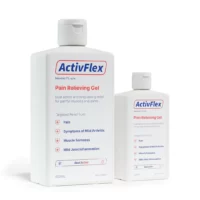Trigger Point Therapy

Trigger Point Therapy
A Guide to Trigger Point Pain Relief
Introduction
Trigger Point Therapy, a specialised form of Remedial Massage Therapy, has gained recognition for its effectiveness in alleviating muscle tension and pain. This therapy, pivotal in physiotherapy practice, offers a non-invasive solution to chronic and acute pain conditions.
What is Trigger Point Therapy?
Trigger Point Therapy involves applying direct pressure to specific points on tender muscle tissue. These points, known as trigger points, are often the source of muscle pain and discomfort.

Activating Trigger Points
Trigger points in muscles can be activated by various factors, including overuse, trauma, electrolyte imbalances, infections, and nerve pain. These points can cause direct pain or refer pain to other body areas, making diagnosis and treatment a specialised skill.
Benefits of Trigger Point Therapy
Trigger Point Therapy is suitable for almost everyone. Muscles with active trigger points tend to be weaker and restricted in movement. Addressing these points can restore strength and flexibility, often relieving pain that other treatments have failed to alleviate.
Who Performs Trigger Point Therapy?
Qualified physiotherapists or remedial massage therapists, trained in soft tissue therapies, conduct Trigger Point Therapy. They possess in-depth knowledge of muscle anatomy and are skilled in identifying and treating trigger points.
Treatment Frequency
The number of treatments varies based on the individual’s condition. Acute injuries might require fewer sessions, while chronic conditions could need a more extended treatment plan.
Combining with Modern Medicine
Trigger Point Therapy complements other medical treatments and therapies. It’s often combined with physiotherapy, massage, and other modalities for enhanced recovery.
Dry Needling for Trigger Points
An increasingly popular complement to Trigger Point Therapy is Dry Needling, a technique often used by physiotherapists to effectively treat muscle knots and trigger points. Unlike traditional acupuncture, Dry Needling specifically targets muscular trigger points. By inserting a fine needle into the affected muscle, the physiotherapist can stimulate the trigger point, promoting relaxation and pain relief. This method is particularly beneficial for deep muscles that are difficult to reach with manual massage techniques.
Research suggests that Dry Needling can provide immediate relief from muscular pain and stiffness, enhance range of motion, and aid in the overall recovery process. It’s a safe and efficient technique that, when performed by a trained physiotherapist, can be a powerful tool in managing musculoskeletal pain and enhancing muscle function.
Read more: Dry Needling
Effectiveness in Various Conditions
This therapy is particularly effective for conditions like back pain, neck pain, shoulder pain, knee pain, sciatica, headaches, muscle pain, and joint pain. It’s especially beneficial for chronic pain patterns that are difficult to reverse with conventional treatments.
Recent Research Insights
Recent studies indicate that Trigger Point Therapy not only offers immediate pain relief but also contributes to long-term healing by breaking chronic pain cycles. This therapy is increasingly recommended as part of holistic pain management programs.
Conclusion
Trigger Point Therapy stands out as a highly effective, non-invasive treatment option for a range of musculoskeletal conditions. With its ability to target and alleviate pain at its source, it’s a valuable tool in a physiotherapist’s repertoire.
What to Do?
If you’re experiencing persistent muscle or joint pain, consulting a physiotherapist skilled in Trigger Point Therapy is advisable. They can provide a tailored treatment plan suited to your specific needs.
Related Articles
For more information on related topics, visit PhysioWorks:
Massage Therapists
Massage FAQs
Your Ultimate Guide to Massage Therapy and Muscle Injury Recovery
If you're curious about the world of massage therapy and its benefits, look no further. This article will serve as your go-to resource as we explore the various conditions that massage therapy can treat and delve into its numerous benefits.
Let's discover the best massage techniques and learn about the difference between remedial and relaxation massage. We will uncover the wonders of trigger point therapy and acupressure in aiding muscle injury recovery.
For athletes, we'll explore the world of sports massage and discuss the best time to receive pre-event and post-event massages.
Additionally, we'll discuss how you can purchase massage gift vouchers for your loved ones. But that's not all—this article will also address common muscle injury FAQs, including diagnostic methods and the different types of muscle injuries. We'll dive into the best treatments for muscle injuries, including dry needling, strengthening and stretching exercises.
Whether you seek relaxation or are dealing with a muscle injury, this guide has all the answers to help you embark on your massage therapy journey.
Massage FAQs
- What Conditions Can Massage Therapy Help?
- What are the Benefits of Getting a Massage?
- What Are The Best Massage Techniques?
- PhysioWorks Massage - Money Back Guarantee!
Massage Styles
- What Are The Common Massage Styles?
- What Is The Difference Between Remedial & Relaxation Massage?
- How Does Trigger Point Therapy Help?
- How Does Acupressure Help Muscle Injury?
Sports Massage
- What is Sports Massage?
- When is the Best Time to Get a Pre-Event Massage?
- When is the Best Time for Your Post-Event Massage?
Massage Gift Vouchers
Common Muscle Injury FAQs
Diagnostic
- How Do You Know If It's A Muscle Injury?
- What are the 4 Types of Muscle Injuries?
- What are the Most Common Muscle Injuries?
- What is a Trigger Point In A Muscle?
- What Causes Post-Exercise Muscular Pain?
- How Do You Know If Your Back Pain Is Muscular?
- Tendinopathy vs Muscle Tear?
- Muscle vs Ligament Injury?
Treatment & Recovery
- What is the Best Early Muscle Injury Treatment?
- How Long Does It Take For A Muscle Injury To Heal?
- What Helps Muscle Strains Heal Faster?
- How Does Dry Needling Help Muscle Injury?
- How Can You Speed Up Muscle Recovery?
- What's the Benefit of Stretching Exercises?
- How Do Foam Rollers Help Muscle Recovery?




























